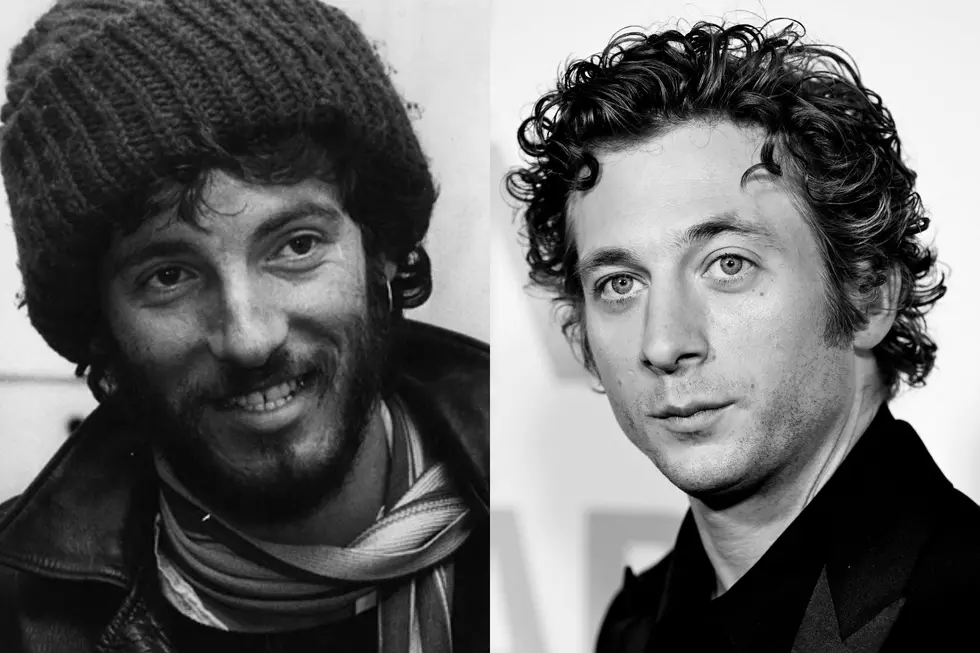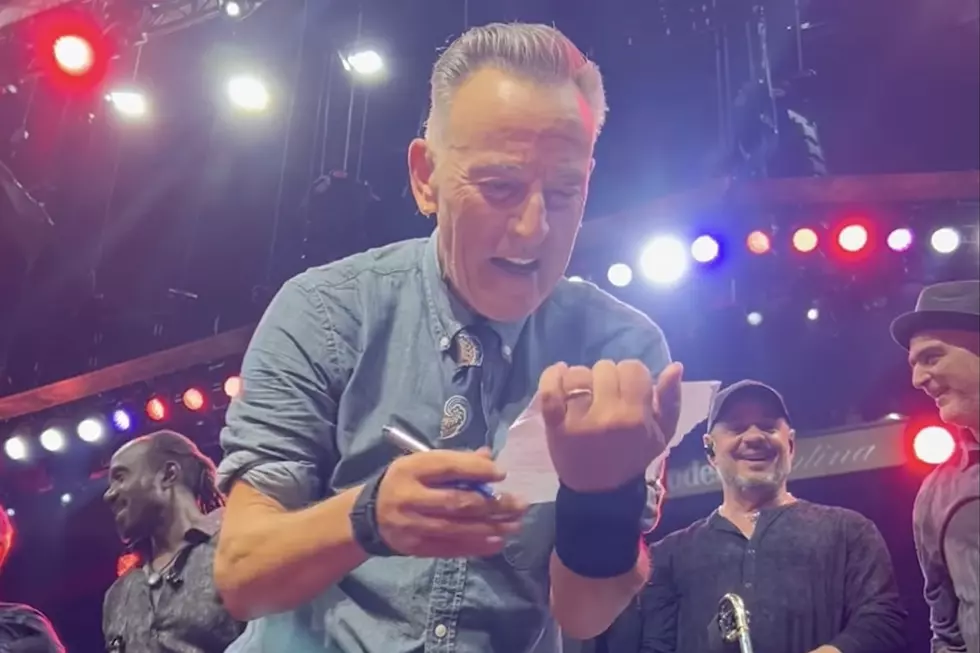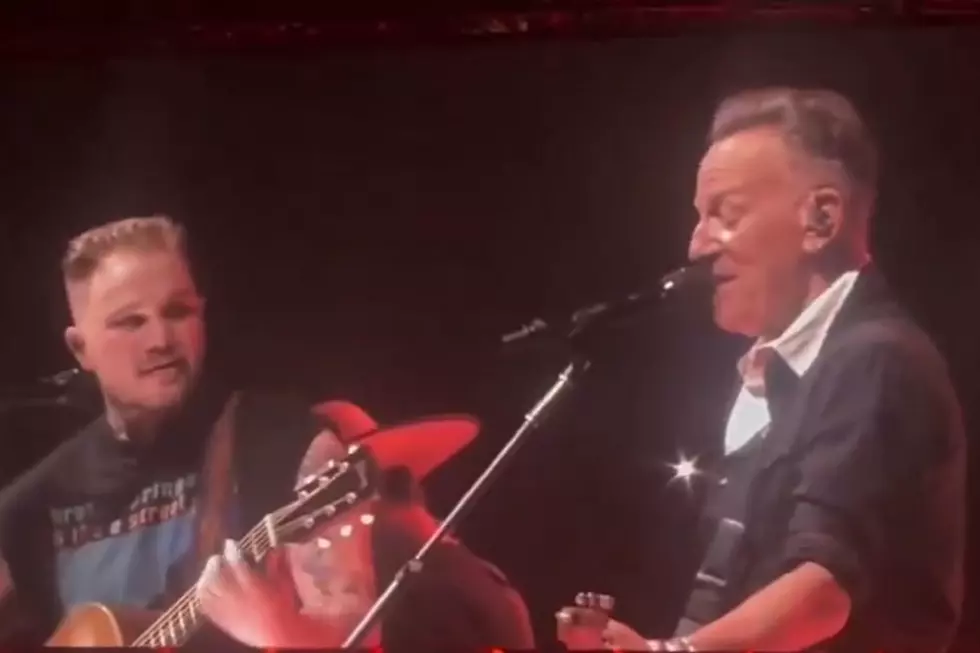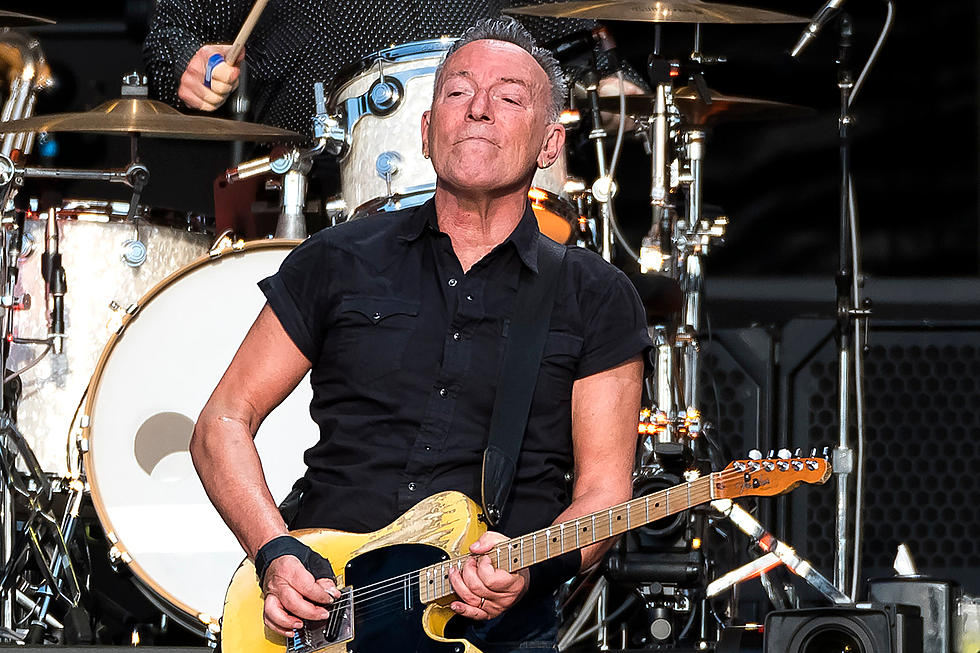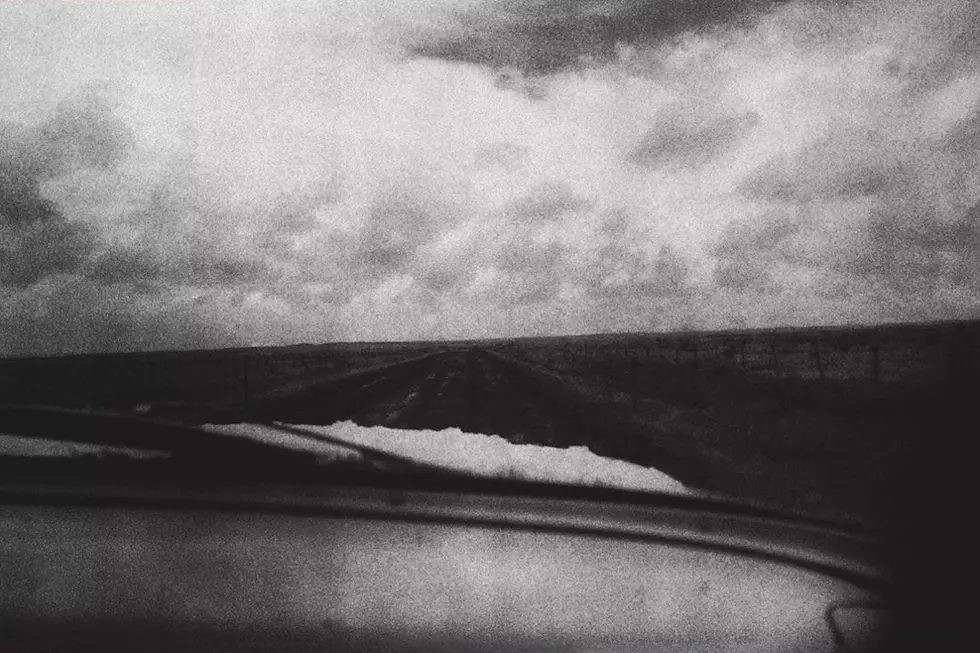
How One Amazing Night Led to Bruce Springsteen’s ‘Nebraska’
Following the massive success of 1980's double album The River, many expected Bruce Springsteen to follow up his first No. 1 album with another set of radio-friendly rock songs. Instead, the songwriter released Nebraska, a stark acoustic record that was mostly recorded in one session, on Jan. 3, 1982.
Ironically, the recording of Nebraska began as an exercise in then-new technology. For years, Springsteen had recorded demos into a boom box. But he decided to invest in a Teac Tascam 144 four-track cassette recorder so that he could add an extra guitar or percussion to give the E Street Band a better idea of what he wanted.
Mike Batlan, his then-guitar tech, set up the portable studio in Springsteen's bedroom in Colts Neck, N.J. on the morning of Jan. 3 and went to work. In a marathon session that took them deep into the night, Springsteen recorded guitar-and-vocal tracks for 15 songs, with overdubs on a few. Two others, "My Father's House" and "The Big Payback," were recorded a few months later.
But when the band tried to record Spingsteen's new material, only four of the songs – "Born in the U.S.A.," "Pink Cadillac," "Downbound Train" and "Child Bride," which was later rewritten as "Working on the Highway" – translated to a full-band arrangement. Three of those wound up on Born in the U.S.A. two years later, while "Pink Cadillac" was the b-side of "Dancing in the Dark."
The problem was that the songs continued the dark themes found on the second disc of The River, like "Stolen Car" and "Wreck on the Highway." While the songs weren't necessarily autobiographical, the demons haunting the characters reflected Springsteen's own desperation and isolation – even as he was becoming a big star – that stemmed largely from his troubled relationship with his father. The characters were lost and adrift, and the raw, ghostly sound of the demos worked better than the E Street Band's bar-band rock.
Listen to Bruce Springsteen's 'Atlantic City'
Five of the songs – "Atlantic City," "Highway Patrolman," "Johnny 99," "State Trooper" and the title track – deal with characters who have turned to a life of crime. It didn't make sense to put a heavy back beat to, say, "My Father's House," or a soul-inflected Clarence Clemons sax solo on "Used Cars." Springsteen's harmonica did the trick.
Unable to get the sound he wanted from the band, Springsteen asked engineer Toby Scott if there was any way to put out the cassette of the demos. Scott was able to do his magic, and Nebraska was released, to minimal hype, on Sept. 30, 1982.
To this day, the "Electric Nebraska" sessions, outside of those four songs, have not been released either officially or on bootleg. But Springsteen has since figured out how to rock out on half of the Nebraska material. "Atlantic City," "Mansion on the Hill," "Johnny 99," "Open All Night" and "Reason to Believe" have all been somewhat regularly performed by the full band on various tours.
Meanwhile, Springsteen has revisited this period's stripped-down approach on two other albums; 1995's The Ghost of Tom Joad, and Devils & Dust from a decade later. Neither of them, however, have the consistency and power of what was recorded in a New Jersey bedroom on that January day in 1982.
Bruce Springsteen Albums Ranked
More From Ultimate Classic Rock
